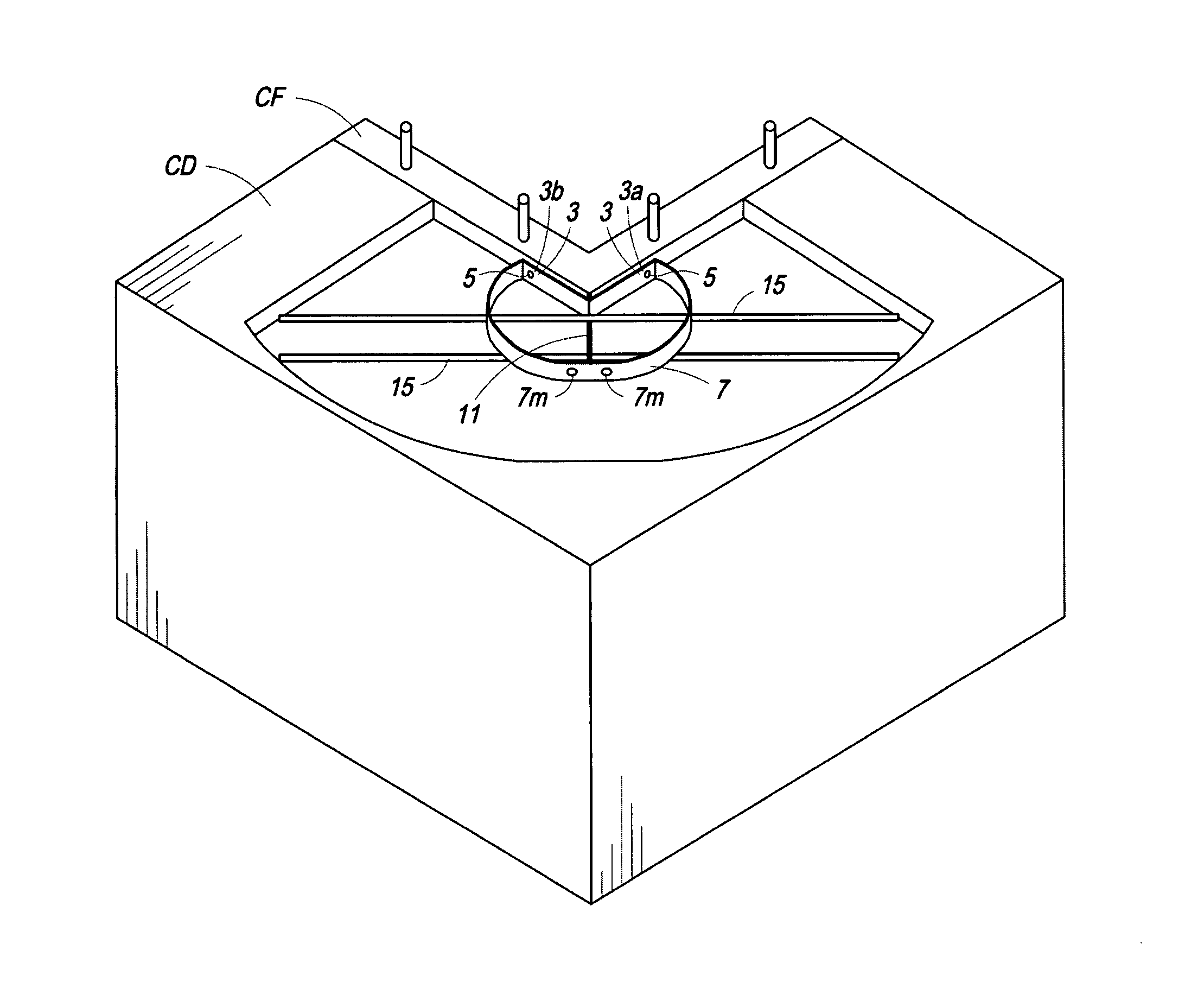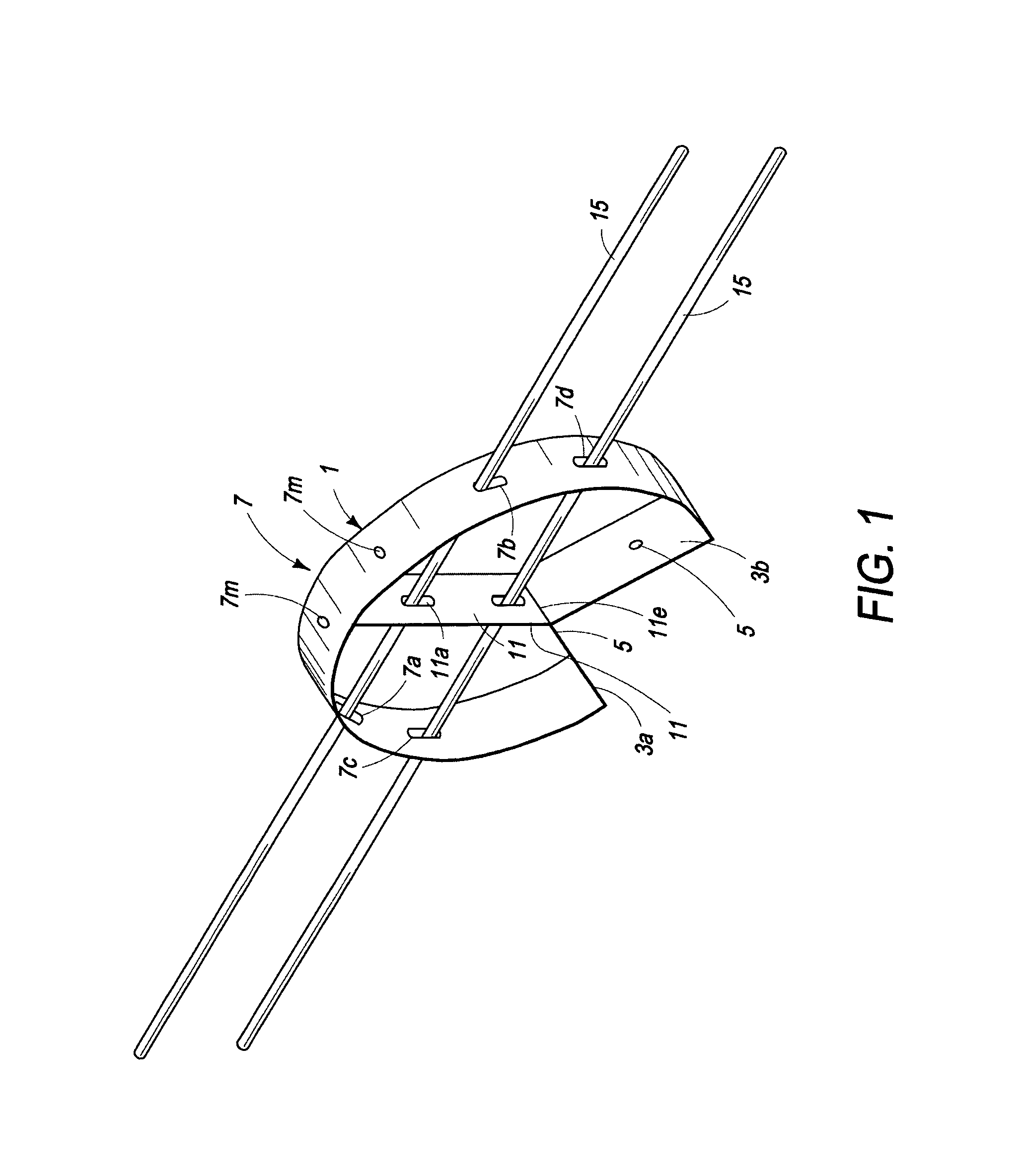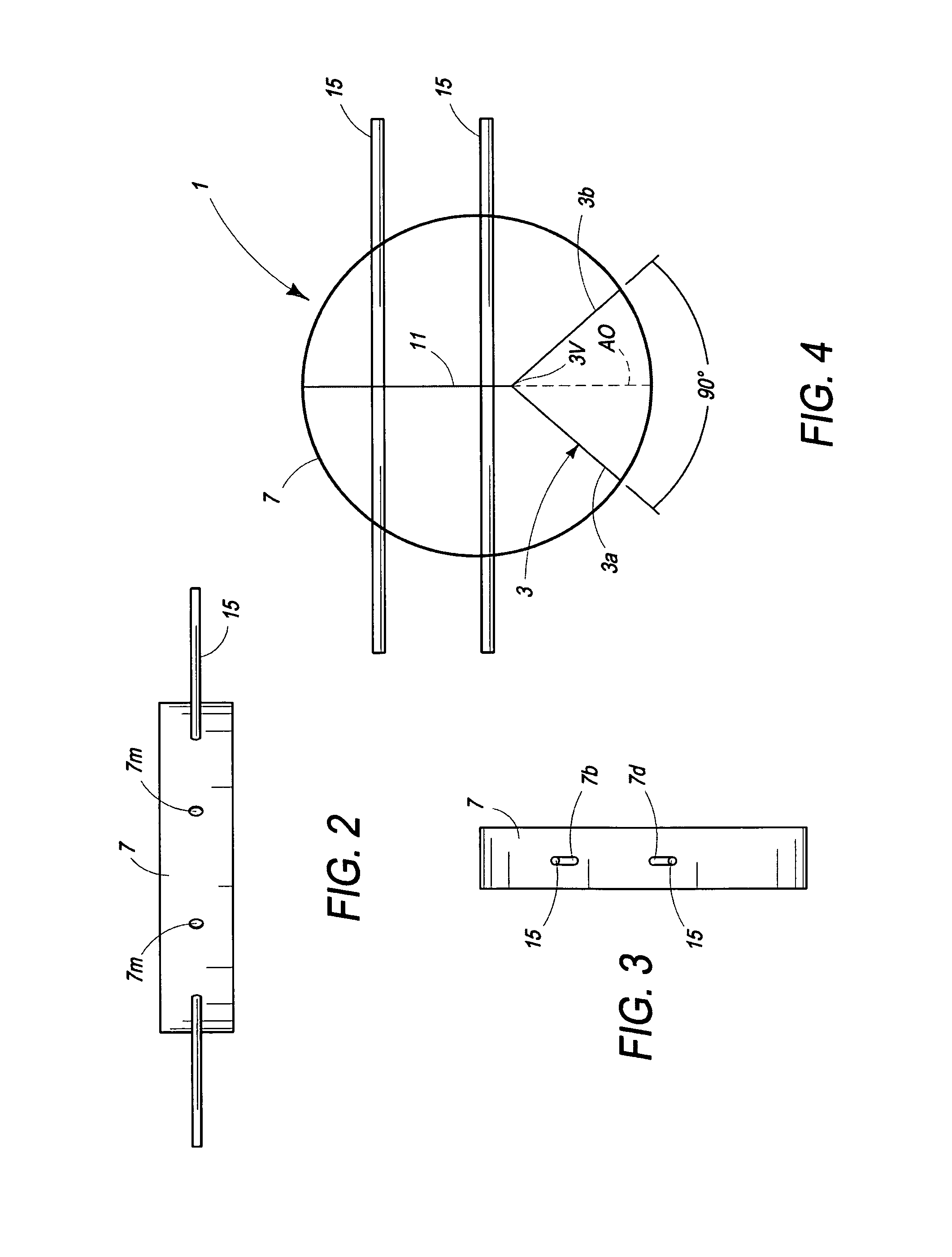Concrete crack inhibiting device
a crack inhibiting device and concrete technology, applied in the direction of girders, building repairs, manufacturing tools, etc., can solve the problems of stress cracks, high cracks and fractures emanating from the re-entrant corners, and serious construction problems in the building industry. , to achieve the effect of sufficient structural integrity
- Summary
- Abstract
- Description
- Claims
- Application Information
AI Technical Summary
Benefits of technology
Problems solved by technology
Method used
Image
Examples
Embodiment Construction
[0032]With reference to the Figures, the present invention provides a concrete crack inhibiting device 1 for use in inhibiting stress fractures from developing at re-entrant corners RC of concrete structures CD such as commonly arising in poured concrete walls W, floors F, ceilings, etc. The device 1 consists essentially of (a) a mountable re-entrant corner brace 3 equipped with corner mounts 5 for mounting the corner brace 3, and (b) a stress fracture intercepting plate 7 structurally supported by the re-entrant corner brace 3 and radially positioned about said corner brace 3 so as to intercept and retard stress fractures from radiating outwardly from a casted re-entrant concrete corner when the device 1 is implanted therewithin. The cornering brace 3 effectively serves as a base structure for structurally supporting a radial extending arm 11 and the stress fracture intercepting plate 7. The intercepting plate 7 is sized and positioned in a transverse relationship to stress fractur...
PUM
| Property | Measurement | Unit |
|---|---|---|
| length | aaaaa | aaaaa |
| bisecting angle | aaaaa | aaaaa |
| bisecting angle | aaaaa | aaaaa |
Abstract
Description
Claims
Application Information
 Login to View More
Login to View More - R&D
- Intellectual Property
- Life Sciences
- Materials
- Tech Scout
- Unparalleled Data Quality
- Higher Quality Content
- 60% Fewer Hallucinations
Browse by: Latest US Patents, China's latest patents, Technical Efficacy Thesaurus, Application Domain, Technology Topic, Popular Technical Reports.
© 2025 PatSnap. All rights reserved.Legal|Privacy policy|Modern Slavery Act Transparency Statement|Sitemap|About US| Contact US: help@patsnap.com



